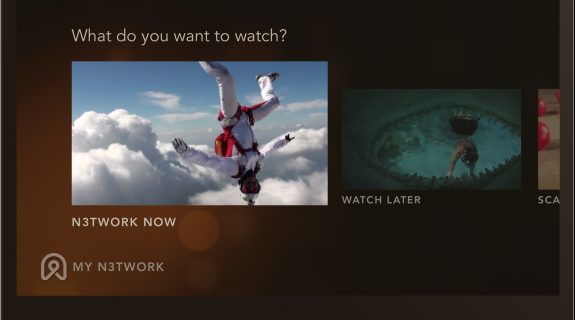We live in a time of extreme personalization, where even our marketing is becoming hyper-targeted to each and every individual.
Which is why “it’s almost difficult to imagine,” said Neil Young, CEO and founder of video discovery app N3twork, “given how we consume media on our devices, that the biggest media of all – TV and video – isn’t really personal to us. It’s programmed by someone else for us, put together in a way that makes sense to us as individuals.”
Young created N3twork with the goal of putting a personal video network in the hands of every consumer. Naturally, he told Brief, his startup lacks the resources to acquire broadcast TV video rights. Nor can it, or nearly any company, hope to provide the sort of exceptional original programming put out by the HBOs and Netflixes of the world. But between those two ends of the spectrum, “there’s an opportunity to disrupt and re-imagine the fat middle of content,” Young said. “Those vertically targeted channels around travel or style or food – all the things we as humans have interest in. There’s a tremendous chance to take the content that exists there and to contextualize it around interests and present it to the user.”
Currently, N3twork employs a team of humans who work with its technology to curate content from about 6,500 video sources (YouTube, Bloomberg, etc.), indexing about 1,000 new hours of video per day. New users of the app select from broad areas of interest, and the videos start rolling in, each featuring hashtags connecting them to more specific areas within that realm, like “pasta” within the category of “food.” Users can upload their own content as well, and categorize it any way they like, but you’ll never see clips from someone’s channel on cat-grooming techniques unless you’ve expressed interest in doing so.
N3twork’s interface is dominated by its viewing panel, “N3TWORK NOW,” which displays whatever video the app has deemed to be of interest to the user. Tapping the screen actually plays the video, while swiping to the left bypasses it to bring up the next video. Swiping to the right stores the video in the “Watch Later” bin, a kind of personal DVR for your personal video network. Across from “Watch Later,” the feature “My Channel” stores videos the user has uploaded, shared or otherwise posted using N3twork. Like any self-respecting video app, other users can follow your personal network – and vice-versa – and “My Channel” holds the goods that get served up when they do. If you get tired of watching on your small screen, N3twork interacts with Apple TV’s AirPlay feature beautifully, not only letting you mirror the device on your television set, but actually changing the display to look better on the big screen, and turning your smart phone into the remote.

Making online video palatable is all the rage these days, and for good reasons: There are literally billions of hours of it and no viable way of sifting through it all. Last week’s App Watch focused on Pluto.TV, an Internet video compiler that mimics the look and navigation of cable television boxes. But where Pluto.TV presents hundreds of different channels to peruse, N3twork presents only one. Where Pluto.TV has adapted its mobile app for big-screen TV display via Amazon Fire, N3twork is perhaps the first video app, broadcast-centric or no, to utilize AirPlay as a complimentary extension that actually improves on the offering, rather than just a replica of what’s on the device’s screen.
Is one model preferable to the other? Yes, if you believe, as Young does, that “the systems that house [Internet video] content or let you search for that content require you to want go find it in the first place. As humans, we’d prefer that content comes to us. [N3twork wants] to organize that content and deliver it in a way that makes sense.
“True disruption actually expands engagement and expands usage,” Young continued. “The opportunity with mobile is to change the nature of demand so people are consuming even more content… I think we’re in the golden age of TV in terms of the quality of content and we have the opportunity to move into the golden age in terms of how it’s actually distributed.”
Tags:













































__twocolumncontent.jpg)











